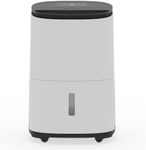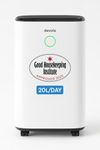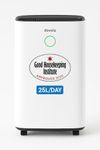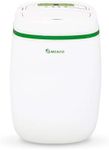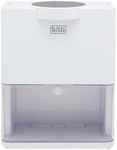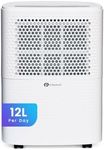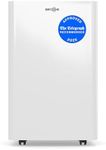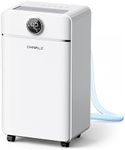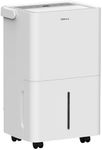Buying Guide for the Best Dehumidifier With Air Purifier
When choosing a dehumidifier with an air purifier, it's important to consider both the dehumidification and air purification capabilities. This type of device is designed to improve indoor air quality by removing excess moisture and filtering out pollutants. To find the best fit for your needs, you should evaluate several key specifications. Understanding these specs will help you make an informed decision and ensure that the device meets your specific requirements.Dehumidification CapacityDehumidification capacity refers to the amount of moisture a dehumidifier can remove from the air in a given period, usually measured in pints per day. This spec is important because it determines how effectively the device can reduce humidity levels in your space. For small rooms or areas with mild humidity, a lower capacity (20-30 pints per day) may suffice. For larger spaces or areas with high humidity, you may need a higher capacity (50-70 pints per day). Consider the size of the area and the level of humidity when choosing the right capacity for you.
Air Purification EfficiencyAir purification efficiency indicates how well the device can filter out pollutants such as dust, pollen, smoke, and other airborne particles. This is typically measured by the type and quality of the filters used, such as HEPA filters, which can capture particles as small as 0.3 microns. If you have allergies or respiratory issues, a dehumidifier with a high-efficiency air purifier (HEPA filter) is essential. For general air quality improvement, a standard filter may be sufficient. Assess your air quality needs to determine the appropriate level of purification efficiency.
Coverage AreaCoverage area refers to the maximum size of the space that the dehumidifier with air purifier can effectively serve, usually measured in square feet. This spec is crucial because it ensures that the device can handle the size of your room or area. For small rooms, a device with a coverage area of up to 300 square feet may be adequate. For larger rooms or open spaces, look for a device that can cover 500 square feet or more. Match the coverage area to the size of the space where you plan to use the device.
Noise LevelNoise level indicates how loud the device operates, typically measured in decibels (dB). This is important if you plan to use the dehumidifier with air purifier in a bedroom, office, or any other quiet environment. Lower noise levels (30-40 dB) are ideal for such settings, while higher noise levels (50-60 dB) may be acceptable for less noise-sensitive areas. Consider where you will place the device and how much noise you can tolerate when selecting the right noise level for you.
Energy EfficiencyEnergy efficiency refers to how much energy the device consumes while operating, often indicated by an Energy Star rating. This spec is important because it affects your electricity bills and the environmental impact of the device. Energy-efficient models use less power to achieve the same results, making them more cost-effective and eco-friendly. Look for devices with an Energy Star rating or other energy efficiency certifications to ensure you are choosing a model that balances performance with energy consumption.
Tank Capacity and Drainage OptionsTank capacity refers to the size of the water collection tank in the dehumidifier, usually measured in liters or pints. This spec is important because it determines how often you will need to empty the tank. Larger tanks require less frequent emptying, which is convenient for continuous operation. Some models also offer drainage options, such as a hose connection for continuous drainage. If you prefer less maintenance, look for a model with a larger tank or continuous drainage option. Consider your convenience and maintenance preferences when choosing the right tank capacity and drainage options.
